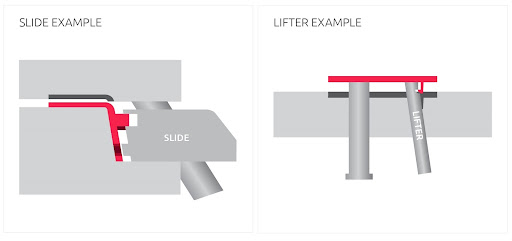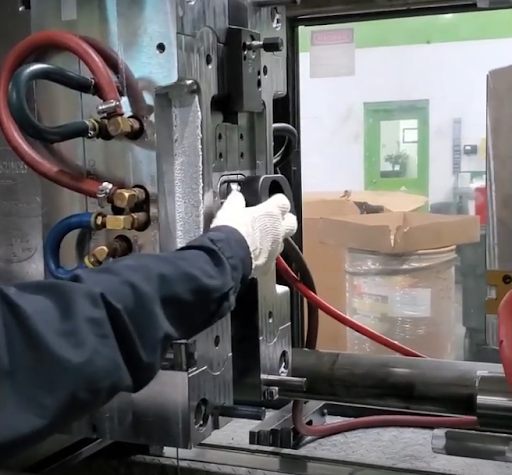Time to read: 2 min
The Challenge: Undercuts and Lower Volumes
Undercuts are recesses or projections on the surface of an injection molded part that prevent the part’s direct removal from the mold cavity. If the undercut is external, then a device called a slider can be used. If the undercut is internal, then a device called a lifter can be used instead. Both of these automated devices are parts of the mold, but add costs that can be hard to justify for lower part production volumes.
The Solution: Injection Molding Handloads
When you partner with Fictiv, your plastics project can use handloads instead of injection molding sliders or lifters. Handloads are inserts that are manually placed, or hand-loaded, into the mold to achieve features such as undercuts. The hand-loaded piece is ejected with the finished part and removed so it can be reinserted during the next injection molding cycle.
Hand loads add a labor cost to each part, but they cost less during the initial tool build than sliders or lifters. This makes hand-loading a cost-effective choice for low-volume injection molding and prototyping, and hand loads can still support complex geometries such as threads. Injection molding best practices advise against using unnecessary undercuts, but handloads can make necessary undercuts cost-effective.
The Impact: Cost-Effective Part Removal and Expert Assistance
Fictiv provides design for manufacturing (DFM) feedback so that you can identify potential undercuts and eliminate the ones that are unnecessary. For necessary undercuts, our Manufacturing Partners can use sliders, lifters, or handloads depending on what’s best for your application. If you can’t justify the cost of sliders and lifters across a high volume of parts, handloads for lower volumes are a good alternative.
At Fictiv, we have the resources, know-how, and manufacturing network to deliver the injection molded products that you need. Learn more about our plastic injection molding services and create an account to get a quote today.












